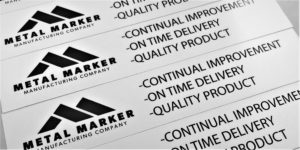Water Purification Plants
We rely on fresh clean water for everything from drinking to industrial manufacturing and waste removal. Water purification plants filter used water and remove hazards so that it can be safely used again.
Plants serve to eliminate bacteria or other potentially hazardous contaminates in the water.
Providing potable or drinkable water is incredibly important for communities. Access to clean water is essential for our well-being.
The purification process utilizes various machines, equipment, and testing to ensure the water is purified.
Applications
Asset Tracking
Just like most large scale industrial type operations, water plants rely on a bevy of equipment and machinery to process the water
Filtration systems, tanks, heaters, and more all ensure water is potable by the time it reaches your kitchen faucet.
In order to maintain and ensure these machines are running effectively, organizations use asset tags and labels to effectively track and monitor them.
Identification
In any type of plant which uses pipes with running water, chemicals, and more, identification is extremely important.
Marking valves with identification on what is inside the pipe or conduit is extremely important for operators.
This not only helps effectively communicate the liquid inside, but also helps to reduce any mistakes or accidents.
Safety
As mentioned, marking valves is important for operators as a misunderstanding can greatly increase the potential for damage or injury stemming from one of these devices.
A key component of safety for any type of plant is periodic inspections. These regular checks are mandatory for this type of operation.
Not only do they ensure correct processes and safety protocols are being administered, but they help ensure all equipment is functional and not putting employees at risks.
Marking Processes for Water Purification Tags
Photo Anodization
The biggest factor regarding tags used in this industry is will they hold up to the potential exposure of water and other chemicals.
A marking process is worthless if it will easily wear away after coming into contact with water at a water purification plant.

Photo anodization eliminates any of these concerns with its 20+ year outdoor durability. The process embeds the design underneath a protective aluminum layer, shielding it from water or other chemical exposure.
How does this translate to a plant environment? Exceptionally well. Photo anodization is a preferred choice for this industry as the tags are corrosion resistant and extremely easy to read as well.
The nameplates can include barcodes, QR codes, and more for asset tracking purposes. In addition, any other data needed on the tag can be included, such as a company logo or human readable information (HRI).
Printing
The printing process provides the highest level of customization for marking processes. Designs can be nearly any logo or information, and even include color.
While printed labels are very versatile, they are not the best solution when it comes to direct water exposure.
Labels are best suited for usage in safer locations which will not see a great deal of wear and tear on a regular basis.
Wrap-Up
Water purification plants are one of the most important elements of our modern lives. By processing and purifying our water, we do not have to go without access to one of our fundamental needs.
Identification tags help ensure that plants are functioning at their safest and most effective level.